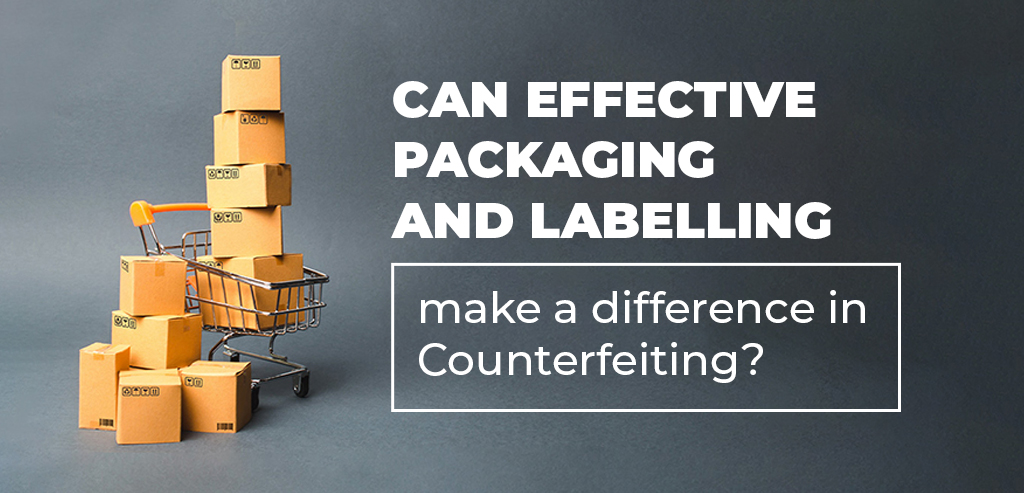Counterfeit goods are a rising problem that may cause significant financial losses to businesses worldwide and even harm consumers. The effects of Counterfeiting can be seen in several industries, including technology, food, cosmetics, and pharmaceuticals. Unfortunately, despite increased efforts to detect and stop it, Counterfeiting still causes damage. However, there are ways to fight back and safeguard your name and goods using tamper-evident seals and anti-counterfeiting techniques.
Some Anti-Counterfeiting Packages Strategies
- Random Patterns
We have a global counterfeiting problem. Those in charge of a brand often resort to cutting-edge anti-counterfeiting methods in their search for a workable technical fix to the problem of counterfeiting. Products protected by anti-counterfeiting measures typically have digital identifiers bound to a physical identifier. Affixing the physical identifier to the product is the next step. Unfortunately, counterfeit products can easily fool anti-counterfeiting systems if the physical identifier can be copied or reused.
In this study, we suggest using Physical Unclonable Function (PUF) as a physical identification in an anti-counterfeiting system. As PUF, companies employ a pattern of scattered particles into which they embed a digital identity. Due to the randomness, it would be extremely challenging to physically clone the pattern.
- Unique Dynamic QR Codes
Dynamic QR codes provide a simple, effective, robust, and optimal solution for various anti-counterfeiting and brand protection issues.
The program generates a QR (Quick Response) code for each product that can be scanned with a smartphone. These codes are generated using the top-tier algorithm behind the scenes, making them unique and impossible to duplicate. Following coding, consumers (or any player in the supply chain) can quickly and easily verify the product’s authenticity by scanning the code with a smartphone app. Immediately upon receiving a request for information, the backend processes the request and returns either verified or blank results regarding the product.
- Holograms
Of all the authentication strategies, holograms are undoubtedly the most well-known. Holograms used for decoration are security features that attempt to replicate three-dimensional objects on a two-dimensional surface. Holograms frequently make use of changing visuals and colour shifts.
Lasers or another coherent light source are used with a specific photographic method to produce unique holograms. The authentication method entails examining how tilting the hologram appears to the naked eye. The operator must also be mindful of the lighting environment to maximise the effect.
- NFC Tags
NFC Tags are stickers or wristbands with miniature microchips designed for use in near-field communication (NFC). Mobile devices can read the tag within the range. Microchips like these are used to store information. A mobile phone or another device that supports NFC can receive data sent from an NFC tag. There are no known vulnerabilities associated with the NFC contactless technology. Additionally, there is an extremely high barrier to entry for hackers.
- RFID Tags
RFID tags are tracking devices that use intelligent barcodes to identify the tracked items. Radiofrequency identification (RFID) is an abbreviation for “radio frequency identification,” RFID tags utilise radio frequency technology, as the name suggests. These radio waves transmit information from the RFID tag to a reader, passing the data to a computer program that reads RFID tags. RFID tags are typically used for items, but they also have several other applications, such as tracking autos, pets, and people with Alzheimer’s. An RFID tag is also known as a radio frequency identification chip.
In some circumstances, RFID tags can transmit and receive data because they contain an antenna and a microchip, also known as an integrated circuit or IC. Any information desired by the user can be written onto the RFID reader’s embedded microchip.
- Tamper Evident Seals
Security seals or tamper-evident labels provide adequate security against tampering by preventing unauthorised access to technical gadgets, boxes, packaging, and doors.
A packet of tablets makes a great example of tamper-evident packaging because of its prominent use. These would be packed in foil blister packaging that could be transparent or opaque. You’ll be able to see precisely where to tear up the foil or blister to get to the pills within.
Conclusion
Anticounterfeiting is the need of the hour, and LetsVeriFy offers the best solution to the clients. You may quickly and easily implement an anti-counterfeit solution for a single product in a single market or region with the help of our adaptable brand protection solution suite. In addition, we’ve made it easy to start small and scale up as needed, as well as embed and integrate our solutions into your current infrastructure and workflows.

